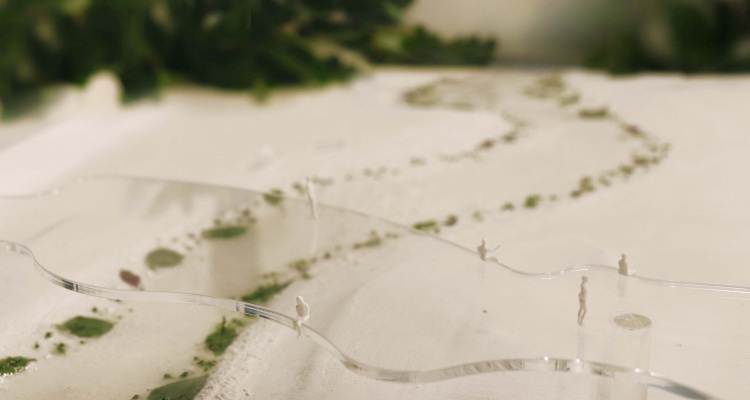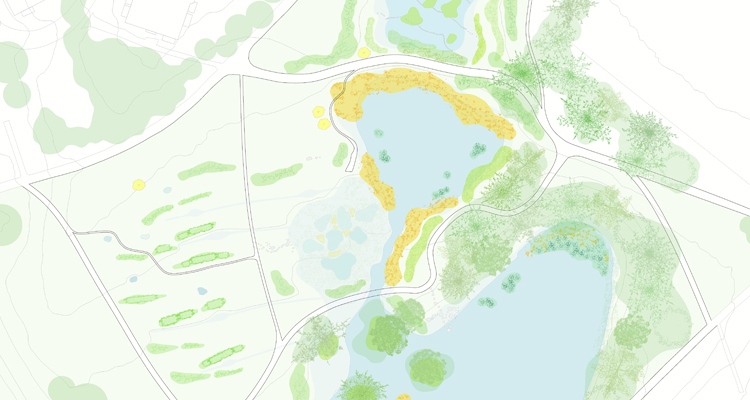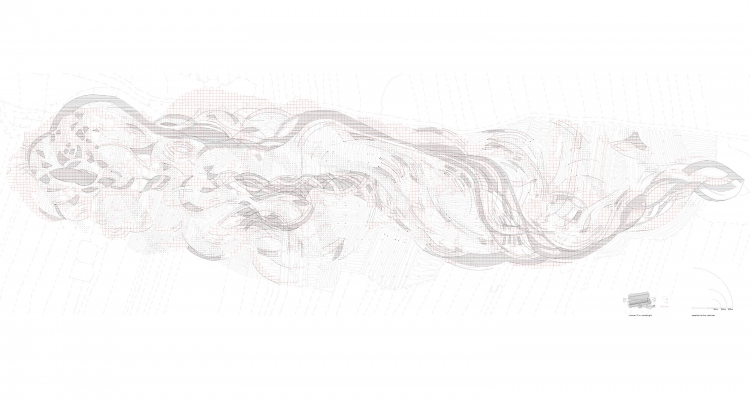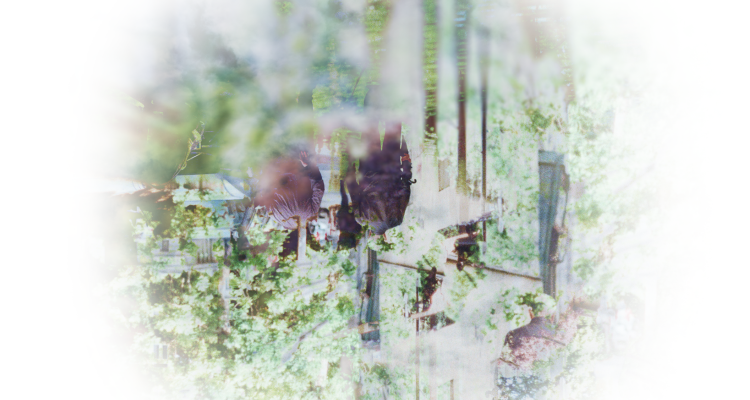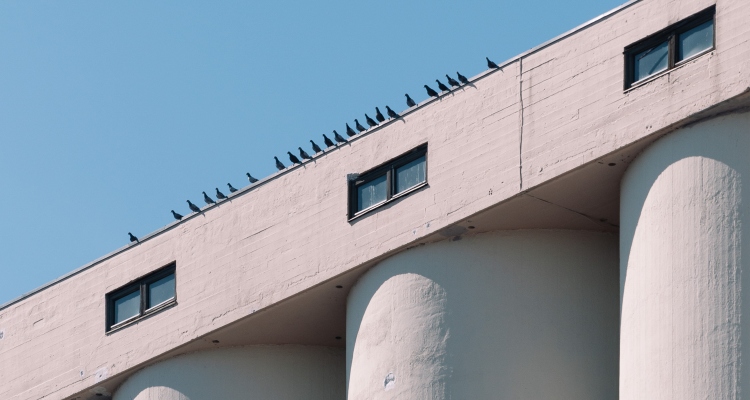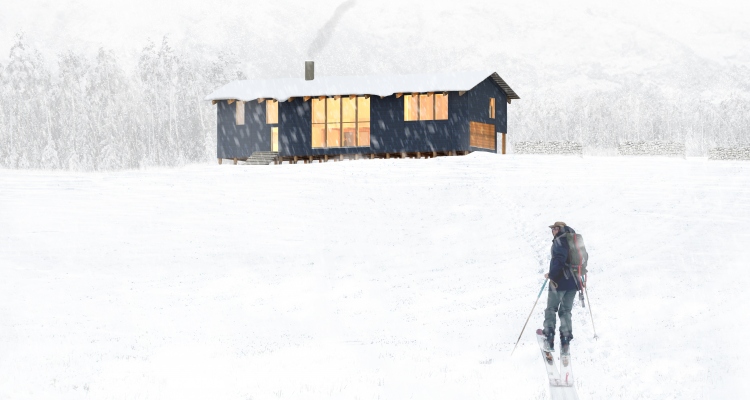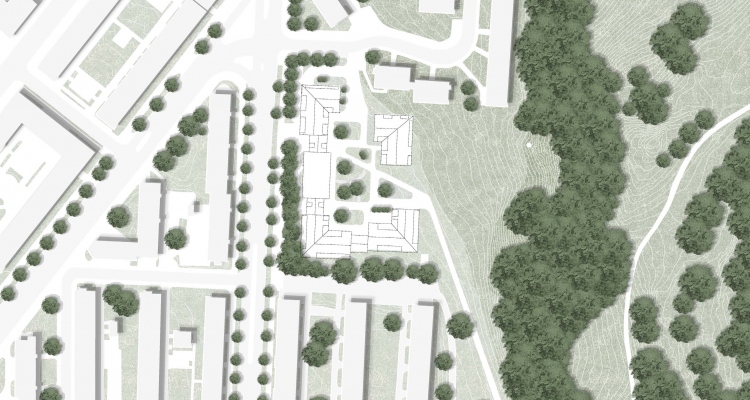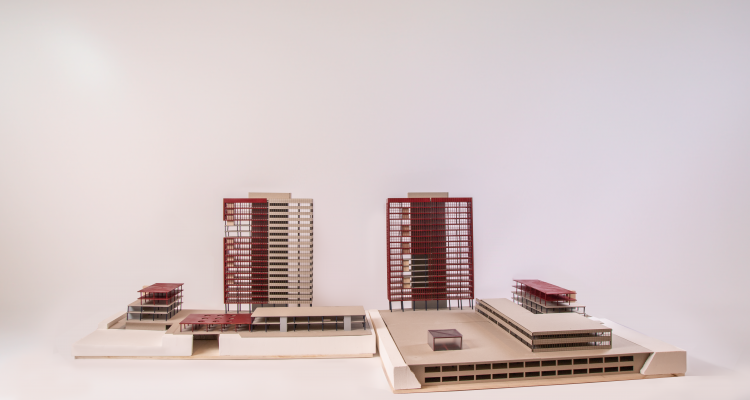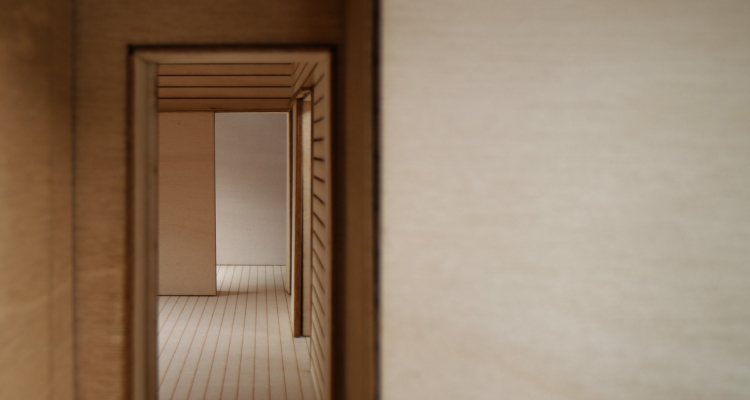In light of the growing threat posed by climate change, the issue of flooding in recent years has emerged as a critical concern. The Diploma “Floodable Garden: From natural Disaster to ecological Hope” examines Lillehammer city center and proposes a strategy to protect it from the Mesna River’s potential floods. The project is particularly focusing on the Strandtorget area which is affected by the Mesna River and Mjøsa lake at the same time.
Diploma project
The diploma topic starts from the observation of birds (occupants of the landscape pattern), aiming to explore a new composition of land by admiring the natural creatures birds as independent living entity and looking for their settlements in the tamed wildness and urbanized grounds.
The project proposes an accumulating copperhancing planning of landscape through scales to handle flooding and future water events in the riverways of the Norwegian mountain landscapes, based on the logic of water and topograhy. Through digital water accumulations and tracings of the valley and river in Hemsedal, the project challenge the act of separation of land and water. This seperation”line” has come into sharp focus during extreme floods, with proposals of walls, levees, natural defenses, land retirement schemes and recomendations for retreat.
The project consists of three main scenarios: My screen time doesn’t understand me, Taming your device and Quantified self for introspection. The scenarios display a breadth of possibilities and new opportunities for how we define our relationship to our devices, as well as offering a new perspective on what healthy usage is.
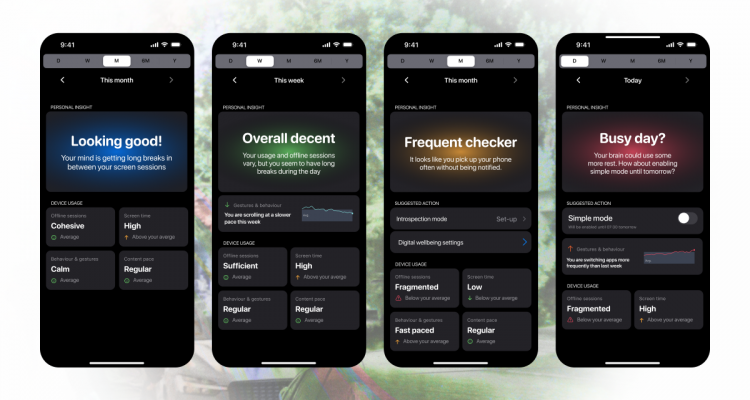

Vippetangen holds a unique position in Oslo’s urban landscape, situated prominently at the tip of Akersneset. It symbolizes both the conclusion of the cityscape against the fjord and serves as the initial point of arrival for those approaching from the fjord’s expanse– the face of Oslo against the fjord, visible from miles away. Its central location within the extensive Oslo harbor, currently undergoing substantial transformation since the early 2000s, places it at the heart of the ongoing urban redevelopment.
Cabins play a big part in the Norwegian culture, contributing to our country’s close relationship with nature and overall sense of well-being. However, this has two sides. While utilizing nature for activities is beneficial, it leads to constructing accommodations in valuable natural landscapes, destroying and flattening large squares of land. Simultaneously, the ascent of Randone introduces a new opportunity, enabling access to previously unexplored and magnificent natural environments while being gentle to nature.
In Norway today, more than 50 percent of the population is not religious. This means that almost 3 million people have no access to good premises for non-religious ceremonies. Åslir is a proposal of how a faith-neutral ceremony building could look like and be used in practice. This is a building based on the values of openness and unity, in a place where life is in focus, framed in rituals. Åslir means ”Åpent”, ”sammen”, ”livet” and ”rituale”.
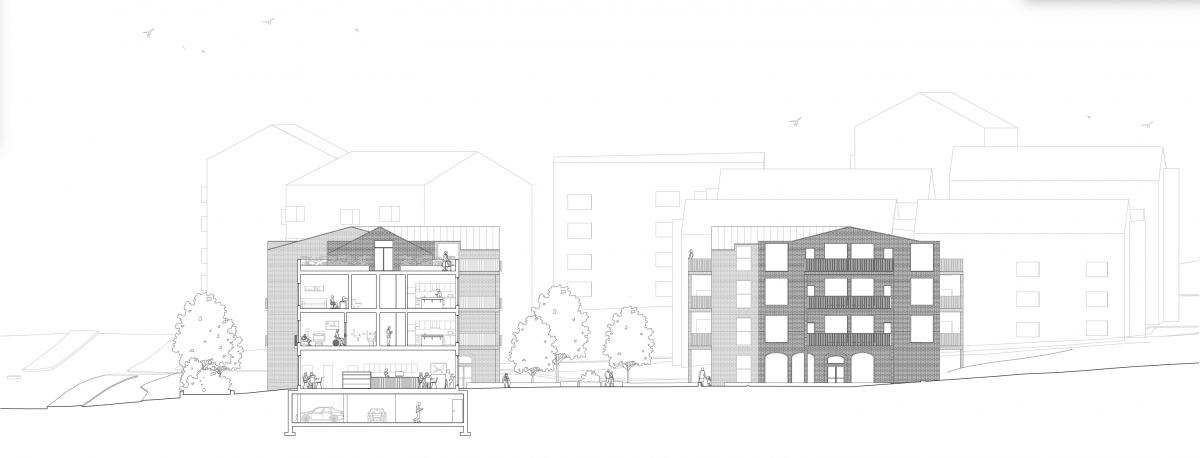
Nursing homes have traditionally been perceived as institutional and sterile environments, isolated from the community, and lacking the feeling of an inviting home.

Økernsenteret in Oslo, built in 1970, has served as a relief for the city with its pavilions and iconic 18-story building, Høyblokka. Over the years, it has housed diverse functions, including offices, a mall, schools, a police station, and more. New plans will keep Høyblokka and demolish the pavilions.
In this diploma project Økernsenteret is preserved, partly within Økerns future development plans. Instead of opting for demolition, the existing structure can be a catalyst for non-commercial activities and community-driven initiatives.
In this diploma project Økernsenteret is preserved, partly within Økerns future development plans. Instead of opting for demolition, the existing structure can be a catalyst for non-commercial activities and community-driven initiatives.
There is very little focus on the varying daylight in Norwegian architecture. With daylight, architecture can be an everchanging performance of spatial experiences.
Quantitative measurements and numbers conclude if the daylight conditions are good enough, and the qualitative aspects are left behind. Daylights physical reality is not all measurable, certain aspects must be experienced to be genuinely grasped.
Quantitative measurements and numbers conclude if the daylight conditions are good enough, and the qualitative aspects are left behind. Daylights physical reality is not all measurable, certain aspects must be experienced to be genuinely grasped.
